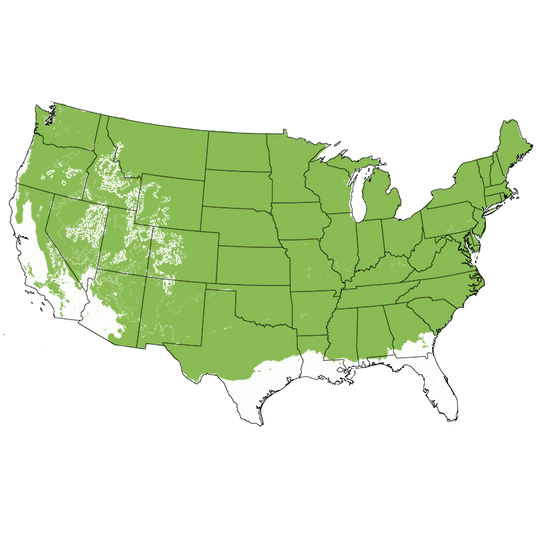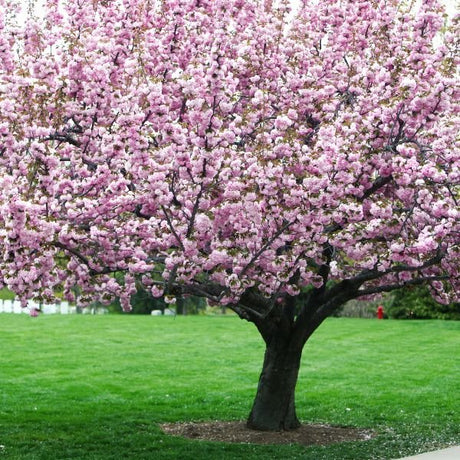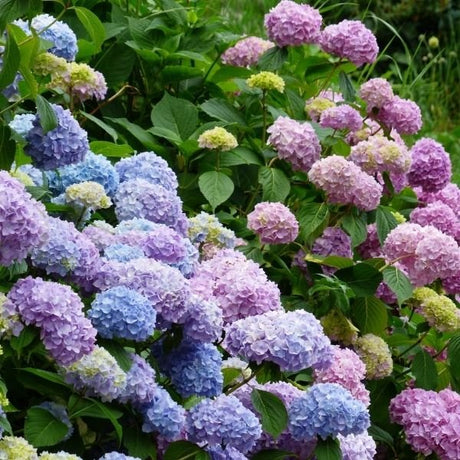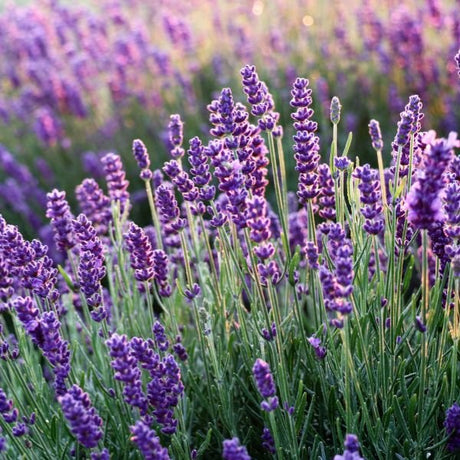Blue Mouse Ears Hosta
- Stay Protected with Plant Sentry ™
Blue Mouse Ears Hosta - Premium #1 Container is backordered and will ship as soon as it is back in stock.
Plant Sentry™
Plant Sentry™
Plant Sentry is designed to protect both consumers and the nursery trade from invasive plant pests and diseases. Sites that display the Plant Sentry protection badge are protected from consumers buying and nurseries shipping material carrying invasive pests and diseases.
This proprietary eCommerce software prevents the shipment of a restricted plant to each state. The Plant Sentry system includes a shipment certification program. The Plant Sentry Compliance Officer works closely with NatureHills.com and each nursery or fulfillment center to ensure only compliant plants are sold to customers.
Click Here to learn more

Delivery and Shipping
Delivery and Shipping
Shipping
To obtain a more accurate shipment time-frame, simply enter your zip code in the “Find Your Growing Zone” box to the right. Our plants are grown all over the country and lead time on items may be different because of this. Once your order is placed, you will also receive the specific shipment time-frame information as part of your order confirmation. Once an item ships, you will receive shipment notification and tracking numbers, so you can follow along while your plant travels to your doorstep. We use FedEx, UPS, or USPS at our discretion.
Due to winter weather we have put a hold on shipping to the areas shown below in grey. You can still order now and we will ship the plant to you during an appropriate time for your zone.
Standard Shipping Rates
At Nature Hills we handle, package and ship the products you order with the utmost care to ensure healthy delivery. Shipping and handling charges are calculated based on the tables below. Please note that some items include an additional handling surcharge, these will be noted on the item's product page.
| From | To | S&H |
|---|---|---|
| $0 | $19.99 | $24.99 |
| $20 | $49.99 | $29.99 |
| $50 | $69.99 | $34.99 |
| $70 | $99.99 | $39.99 |
| $100 | $129.99 | $44.99 |
| $130 | $149.99 | $48.99 |
| $150 | $150+ | Approx 28% |
Click here to see our full rates
Buying Options for Plants
Nature Hills sells a large variety of plants with several options available. Plants are offered in both potted containers and as dormant bare root without soil. Here is a helpful resource to understand your options as you create a beautiful landscape with help from Nature Hills.
Ever wonder what a larger plant will mean for your landscape? Container Sizes are really all about the age of the plant!
Seasonally, Nature Hills offers hand selected, high quality bare root trees, shrubs and perennials. Bare root plants are sold by height from the top of the root system to the top of the plant. Plants may be taller than the height minimums.
- Popular sizes of select trees are 1 foot, 2 feet, 3 feet, etc.
- Popular sizes of select bare root plants is 1 foot, 18 inches, etc.
Nature Hills Container Size by Volume
Keep in mind, specific varieties and different growing conditions can affect the rate at which plants grow. Variations in size may occur.
| Young Plants to 18 Months | ||
|---|---|---|
| Size | Volume | |
| 2"x2"x3" | Ranges from | .18 to .21 dry quarts / .198 to .23 dry liters in volume |
| 4.5" Container | Equal to | .65 dry quart / .72 dry liter in volume |
| Sprinter Pot | Equal to | .63 dry quart / .69 dry liter in volume |
| 4" Container | Ranges from | .31 to .87 / .35 to .96 dry liter in volume |
| 6" Container | Equal to | 1.4 dry quarts / 1.59 dry liters in volume |
| 1 Quart | Equal to | 1 dry quart / 1.1 dry liter in volume |
| 5.5" Container | Equal to | 1.89 of a dry quart / 2.08 dry liters in volume |
| 4"x4"x5" | Ranges from | .8 to 1.1 dry quarts / .88 to 1.2 dry liters in volume |
| 4"x4"x6" | Ranges from | 1.0 to 1.3 dry quarts / 1.1 to 1.41 dry liters in volume |
| 4"x4"x9" | Ranges from | 1.1 to 2.1 dry quarts / 1.2 to 2.3 dry liters in volume |
| 4"x4"x10" | Ranges from | 1.7 to 2.3 dry quart / 1.87 to 2.53 dry liters in volume |
| Plants 18 Months - 2.5 Years Old | ||
|---|---|---|
| Size | Volume | |
| 2 Quart | Equal to | 2 dry quarts / 2.2 dry liters in volume |
| #1 Container | Ranges from | 2.26 to 3.73 dry quarts / 2.49 to 4.11 dry liters in volume |
| 5"x5"x12" | Equal to | 3.5 to 4.3 dry quarts / 3.85 to 4.74 dry liters in volume |
| Plants 2 - 4 Years Old | ||
|---|---|---|
| Size | Volume | |
| #2 Container | Ranges from | 1.19 to 1.76 dry gallons / 5.24 to 7.75 dry liters in volume |
| #3 Container | Ranges from | 2.32 to 2.76 dry gallons / 10.22 to 12.16 dry liters in volume |
| Plants 3 - 5 Years Old | ||
|---|---|---|
| Size | Volume | |
| #5 Container | Ranges from | 2.92 to 4.62 dry gallons / 12.86 to 20.35 dry liters in volume |
| #6 Container | Ranges from | 5.25 to 6.01 dry gallons / 23.12 to 26.42 dry liters in volume |
| #7 Container | Ranges from | 5.98 to 6.08 dry gallons / 26.34 to 26.78 dry liters in volume |
Plant Highlights
Blue Mouse Ears Hosta highlights at a glance!
Plant Highlights
Plant Highlights
-
Brand
-
Botanical Name
-
Growing Zones
-
Mature Height
-
Mature Spread
-
Sun ExposureFull Shade
-
Moisture
-
Soil
-
Growth RateMedium
-
Pollinator Friendly
-
Pollinator Required
-
Fragrant
-
Pruning Time
-
Bloom PeriodEarly Spring, Late Spring

Growing Zones 3-8
Hostas are always welcomed additions to the home, but few exhibit the charm and coloring of Blue Mouse Ears Hosta (Hosta 'Blue Mouse Ears'). This dwarf variety features thick, leathery leaves with the slightest, adorable curl. The petite leaves call to mind cute, little mouse ears (thus the name).
Blue mouse Ears' foliage is an endearing shade of blue-green that attracts the eye throughout the season and this petite Hosta even provides the added benefit of mid-summer flowers. Your Blue Mouse Ears Hosta is a herbaceous perennial that will grow in a tidy compact habit with densely growing clumps.
Dainty bells of lavender decorate the stems that rise up to one foot above the foliage in July, a visual treat as well as a welcome boon for Pollinators. If you're lucky, you might even see a curious Hummingbird checking out the scene. Don't mistake its small size for vulnerability though as this little gem has a hardy, easy-care nature. Cold and heat-tolerant throughout USDA growing zones 3 to 8 and forms a 6-8 inch tall mound that's about 12 inches wide.
Planting and Application:
Plant the low-growing little Blue Mouse Ears in your Rock Garden or scatter a few amid the nooks and crannies in your landscape that could still use a decorative touch! Or add them as an accent in your flower beds under the canopy of your backyard shade trees. Cottage gardens, shady Perennial borders gain cute little leaves, and of course, Mouse Ears look fantastic as a member of your very own Hosta garden!
Use these darling little foliage plants throughout shade gardens and beneath the shade of shrubs as facer plants and adorable skirting! Plant in large planters and containers beneath covered seating areas, porches, and balconies to keep Mouse Ears close by! Darling edging along the garden and pathway edges as pretty finishing touches!
- Curled Blue-Green Little Leaves
- Lavender Bell-Shaped Blooms on Short Scapes
- Pollinator Friendly & Hummingbird Nectar
- Dwarf Hosta Forms Dense Short Mounds
- Edging, Containers, Specimens & Unique Texture
#ProPlantTips for Care:
These Hosta are low-care and highly adaptive to a variety of soils and does best in full to part shade and full shade in hotter climates since too much sun will burn the leaves. These perennials grow best in moist, well-drained, highly organic soils with a pH between 5.5 and 7.5. Sandy loam is better than clay because it provides more aeration for the roots. Keep areas around Hostas clear of excess leaf debris to reduce the presence of slugs and snails. They do best with a 3-4 inch thick layer of mulch chips to help hold in moisture. Deadhead as soon as the blooms fade, and prune back the foliage once it dies back in the fall. They appreciate being divided every 3-5 years.
- Best in Full Shade in Hot Climates & Part Sun/Shade In All
- Moderate Consistent Moisture
- Enriched Well-Drained Soils
- Prune In Late Fall
- Very Easy to Grow & Cold/Heat-Tolerant
It's easy to see why Blue Mouse Ears Hosta once won "Hosta of the Year". It simply doesn't get more loveable than a Hosta that reminds people of mouse ears! Terrific color, a size that fits almost anywhere and an adaptive nature make this a must-have. Order yours today at Nature Hills to finish your seasonal gardening projects!
Frequently Asked Questions
Do Hostas need full sun or shade?
Hosta does best in full sun in cooler climates but does appreciate afternoon protection from the worst of the summer sun, especially in the hottest of their growing zone range. In the hottest climates, Hosta like partial shade or dappled shade, and some varieties will do great in full shade.
Where do Hostas grow best?
Hosta plants love enriched, well-drained soil that is moderately yet consistently moist throughout the growing season. They appreciate mulched garden beds.
Do Hostas come back every year? Are Hostas a perennial plant?
With vigorous carefree growth, Hostas are herbaceous perennial plants that will return year after year with little maintenance.
What do you do with Hostas in the fall? What do you do with Hostas in the winter?
Hosta leaves will die back after frost but the crowns and roots remain intact and dormant until next spring. Prune back the leaves once they turn brown in the autumn and remove them from the plant's area. For winter protection, add a layer of compost or mulch over the crowns to protect them from the chill.
Do Hosta attract hummingbirds or pollinators?
Hostas are loved by pollinators and hummingbirds! All walks of beneficial pollinators will show up to sip their nectar.
What Shipping Options Do You Offer?
NatureHills.com works closely with our growers and nursery professionals to ensure we ship when it is most appropriate for your area. Our goal is to deliver the hardiest plants by avoiding extreme high and low temperatures. Check out our shipping schedule for more information and to learn our wills and don'ts when it comes to shipping plants. Find your Hosta Plants for sale here at NatureHills.com!









